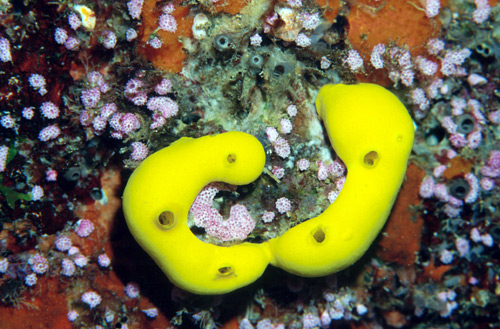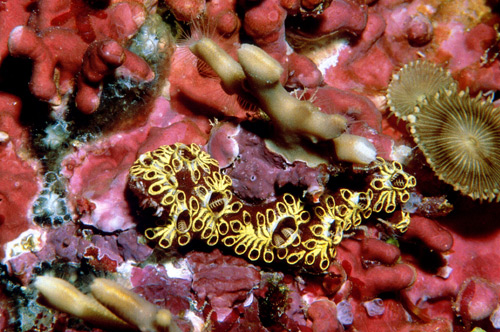The Value of Biodiversity
By Jean-Michel Cousteau

Imagine you have just returned from a life-changing dive trip to an absolutely magnificent island chain surrounded by the most beautiful reefs you have ever seen. Immersion in this candy store of luscious treats has given you a deep connection to the miraculous wonder of life on this planet and you want to make sure everyone appreciates what you have experienced. You organize your photos and show friends and family a bewildering variety of fishes, corals, sea fans, feather stars, and other weird residents of the reef.
But your own reverie is interrupted by the question, “Pretty pictures of cool critters, but what good are they.” Annoying though it may be, this is a valid question – what is the value of biodiversity?
It’s interesting that so many people struggle with the question of the value of biodiversity. In your own community, it is quite obvious that you don‘t expect your personal physician to be a great chef, your accountant to repair your shoes, your bank manager to also advise you on the best motor oil for your car, or your gardener to repair your computer’s hard drive. We appreciate the fact that each of us is good at some things and not so good at others. We respect specialists and pay them well for the important work they do. Collectively, all of us in a community, each doing our own thing, create a reasonably good life for ourselves and contribute to the smooth functioning of society. The value of each occupation becomes quite clear when the garbage collectors or traffic controllers go on strike. Diversity is good and even necessary.
Aware of the loss of biodiversity at a global scale, the International Union for the Conservation of Nature launched a program to review the scientific literature on the value of biodiversity. Scientists from around the world shared their work and this effort was compiled in a book published in 1997 entitled The Work of Nature – How the Biodiversity of Life Sustains Us. It is very readable and I urge any of you who are teachers to get it. It reviews, ecosystem by ecosystem, fascinating case studies about how the work of different species enables ecosystems to thrive.

My colleague, Dr. Richard Murphy, has written a book called Coral Reefs – Cities Under the Sea that really shows the value of species through the work they do to keep the reef a healthy place. Corals are the architects and builders of the reef itself and corals have partners, algae living inside them that make food by using coral waste as fertilizer. The architectural designs of these coral buildings often serve to maximize their surface for collecting sunlight, taking the shape of flat topped trees reaching up for sunlight or a human brain with its convolutions that give more surface area for more algae to make more food.
Seen another way, these coral colonies are buildings with ‘roof top gardens’ where the waste from below fertilizes plant productivity above. A diversity of coral species and a diversity of algae in their rooftop gardens ensure that a variety of habitats from shallow to deep reefs will have specialists capable of dealing with the unique challenges of each environment. And in the process these corals create the structure that becomes home to millions of other species.
Larger algae carpet the reef substrate. These solar collectors are another very important source of food for the reef. Again, a diversity of algae, living in different habitats, ensures that the reef maximizes its ability to capture energy, make food and support an even greater diversity of other reef residents, ranging from invertebrates to fish.
Yet algae can become a problem, just as weeds in a garden can overgrow preferred vegetable plants. So, not surprisingly, there is a diversity of herbivores that graze on algae, mowing the lawn and keeping the weeds in check. This is important because coral larvae prefer a clean, open surface on which to settle. If everything is overgrown with algae, then life is difficult for the microscopic corals beginning life on the bottom.
Again, diversity is important as shown by research conducted in Jamaica on urchins, parrotfish and surgeonfish, important herbivores in the Caribbean. Reduction of parrotfish and surgeonfish populations by over-fishing in the Caribbean has eliminated part of this community of lawnmowers, but sea urchins were generally able to take up the slack. Then in 1983, a disease swept through the Caribbean, virtually eliminating Diadema urchins as the reef’s lawnmowers. In this case, ecological redundancy, which is really ecological social security, had already been lost due to over-fishing. The loss of urchin lawnmowers resulted in an ecological disaster. Algae grew wildly, covering the bottom and creating difficult conditions for corals, both young and old. Problems for corals meant problems for the entire ecosystem. Fortunately, the genetic diversity of urchins, another form of security, was invested in those few possessing immunity from the 1983 disease, and they are now repopulating the reefs, slowly. With the revival of urchins, the ecological balance may return in time, assuming reef management programs allow herbivorous fish populations to be restored.

Other members of the reef clean up crew are important in other ways. Many worms, sea cucumbers, brittle stars and bacteria eat organic waste (detritus) on the bottom. Sponges filter the water, extracting plankton, bacteria and organic waste. These creatures perform the function of a sewage treatment plant, taking in waste, cleaning it and returning sediment or water to the environment cleaner than it was before. Not only are they recycling waste but they are also preventing the build-up of material that could become an environmental problem. As they clean the environment, they grow and become food for other organisms and ultimately release nutrients that can be used by algae to begin another cycle. Actually, bacteria are the most important of all in regenerating raw materials from waste and again there is a vast diversity of specialist bacterial species.
So in the coral reef, we see surfaces carpeted with solar collectors that make food, buildings where roof top gardens are fertilized with waste, and efficient recycling of waste into useful materials. Most important, the security of this ecosystem depends on a diversity of species, some of which overlap to ensure there is a back-up system to cover losses of any important work crews. Just because we don’t know the exact job of each creature, does not mean it has no value. This is only a reflection of our ignorance.
Fortunately, at the highest level of international government we are coming to appreciate the value of biodiversity. The United Nations has declared 2010 as the International Year of Biodiversity, stating, “It is a celebration of life on earth and of the value of biodiversity for our lives. The world is invited to take action in 2010 to safeguard the variety of life on earth: biodiversity.” (www.cbd.int/2010/welcome/)
I applaud and echo the United Nations declaration; we need to keep our oasis in space, our spaceship in the universe, running smoothly by keeping all of the parts.







